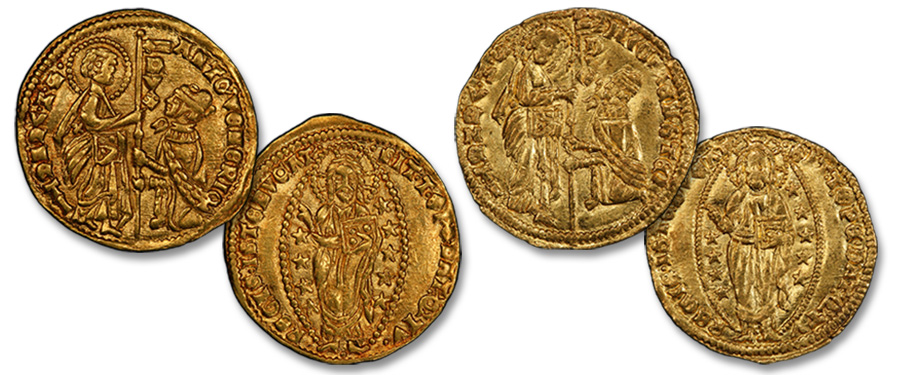
In the news quite a bit recently, riding the wave of crypto-mania and through the hyping of the eccentric Elon Musk, dogecoin has seen great gains as supporters attempt to make it the next bitcoin. The "currency" is based upon a popular meme from the summer of 2013 depicting a Shibu Ina, with the associated image dating to a few years prior. It featured an intentional misspelling of the English ‘dog,’ adding a superfluous ‘e’ that spawned various pronunciations. The meme would famously use comic sans in a variety of colors and placements around the image, with broken English phrases to indicate astonishment, wonder, and amazement. One of the main pronunciations gravitated to was that of ‘DOHJ,’ making it a homonym with the English word for the elected chief of state in medieval to early modern Italian republics, such as that of Venice.
For over a millennium, the doges of Venice were elected to life terms by the city-state’s aristocracy, with the term ‘doge’ emanating from the Latin ‘dux,’ meaning a military leader. Starting in the late 13th century and continuing to the end of the 18th century (the culmination of the reign of the last doge of Venice), the republic issued a gold coin at a ducat weight that would become a coin of the realm throughout the Mediterranean owing to Venetian influence in the region as well as the coin’s seemingly unchanging design. The reigning doge’s name, or an abbreviation thereof, appeared on the obverse along with a kneeling doge receiving a banner from a standing St. Mark—the patron saint of Venice. Meanwhile, the reverse featured an image of Christ the Redeemer within a stellate mandorla. Styles varied over the five centuries of the coin’s minting, with multiples and fractions produced during later reigns. The coinage was so recognized and popular that imitations were commonly produced, such as by Crusaders in the Levant and the isles of the Mediterranean. Our upcoming Collectors Choice Online (CCO) auction in June will feature nine of these interesting trade coins, the earliest of which dates to 1382 and the reign of Antonio Venier, while the latest is dated 1797 and the reign of the last doge, Ludovico Manin, who was forced to abdicate by Napoleon. Despite seeing extensive use as trade coins, many remain quite pristine, with numerous choice and near-Gem grades. Look for these fascinating, entirely tangible assets online later this month!
To view our upcoming auction schedule and future offerings, please visit StacksBowers.com where you may register and participate in this and other forthcoming sales.
We are always seeking coins, medals, and paper money for our future auctions, and are currently accepting submissions for our Official Auction of the ANA World’s Fair of Money in August and our fall Hong Kong Auction in September. Additionally, we are always accepting submissions for our Collectors Choice Online (CCO) auctions, the next of which will be in October. If you would like to learn more about consigning, whether a singular item or an entire collection, please contact one of our consignment directors today and we will assist you in achieving the best possible return on your material.





